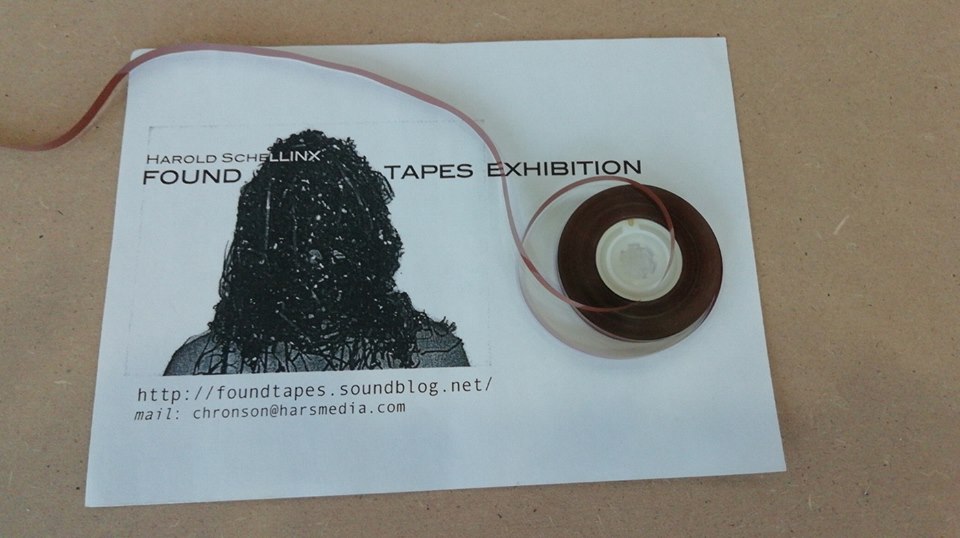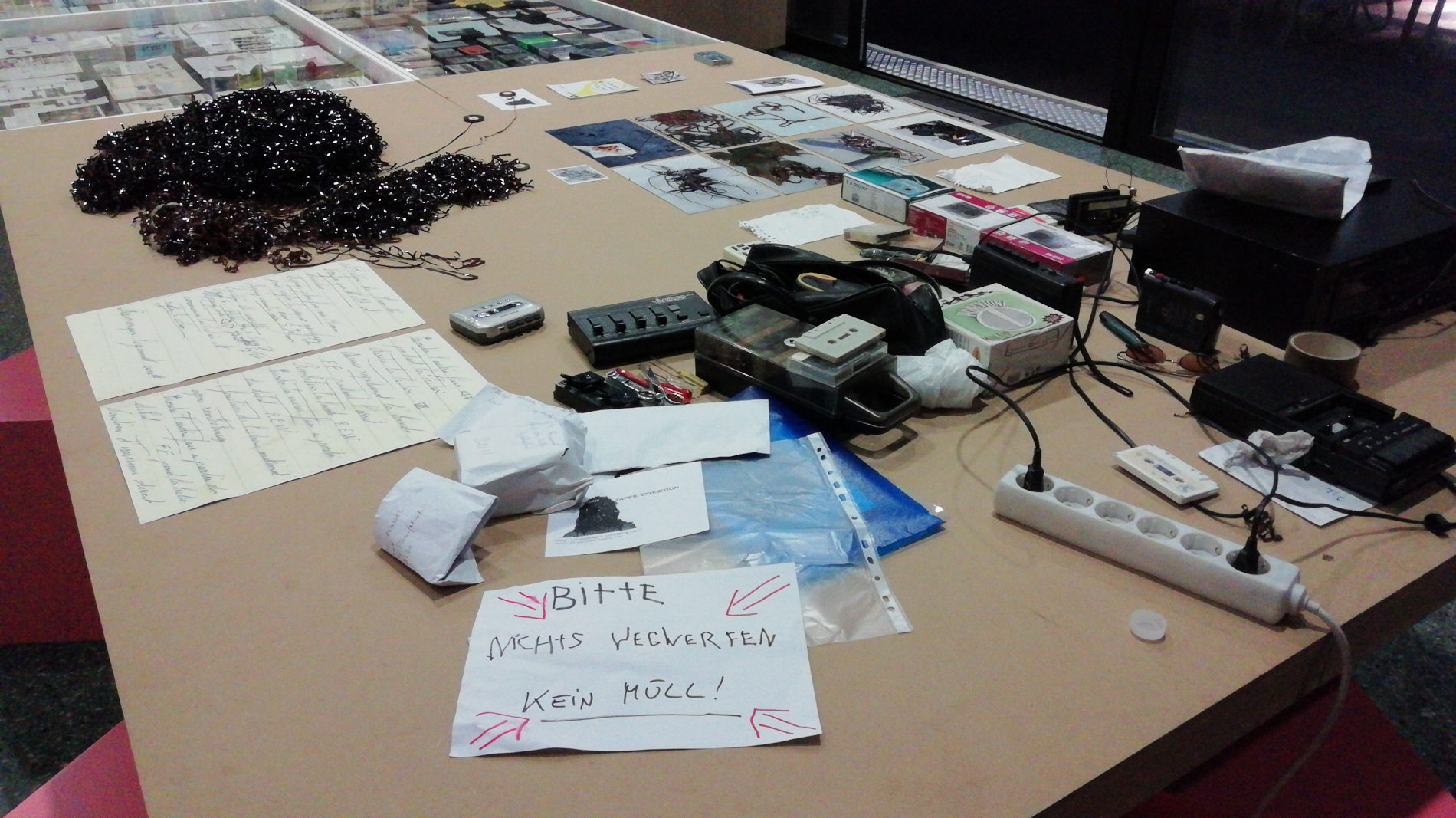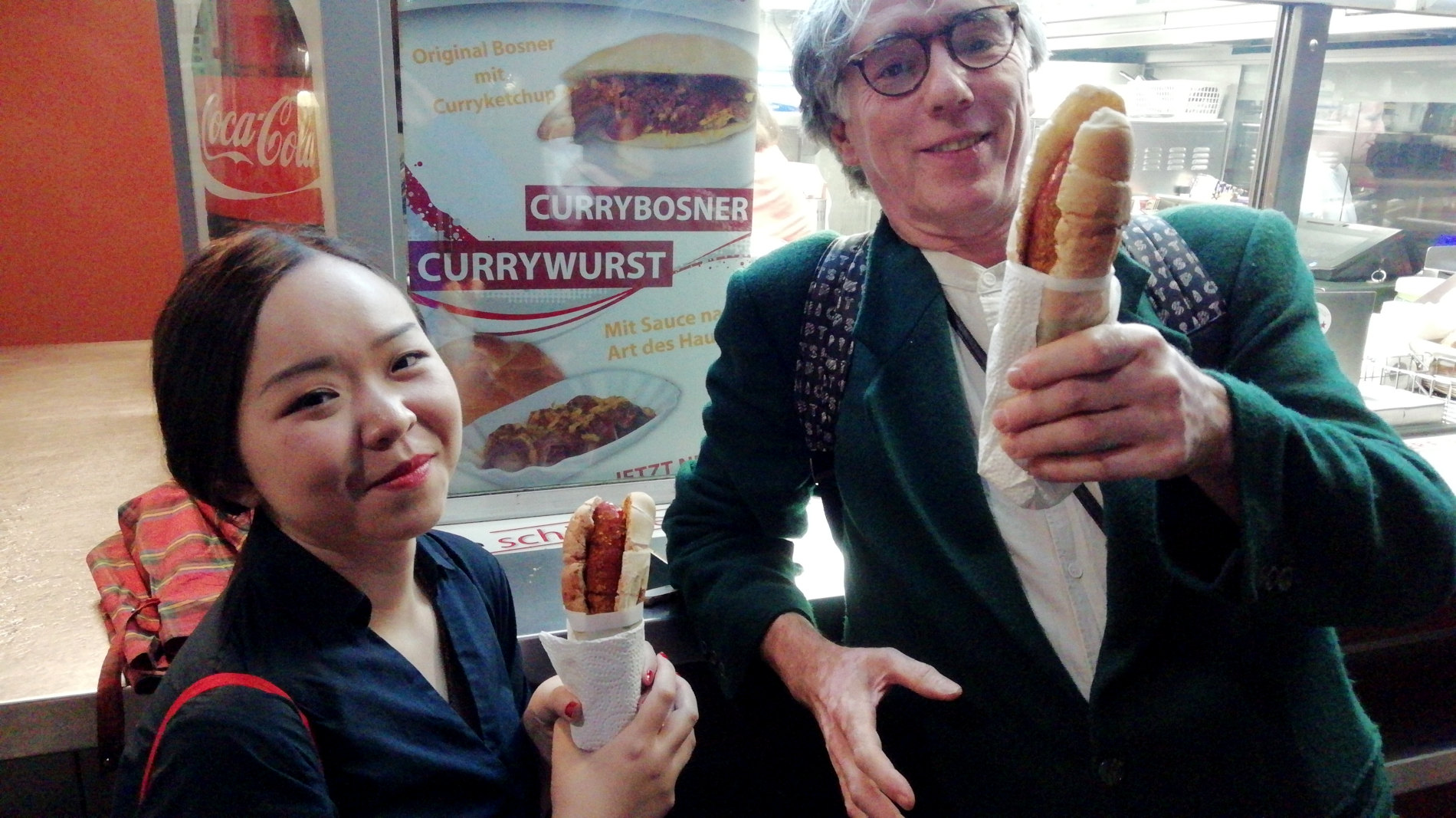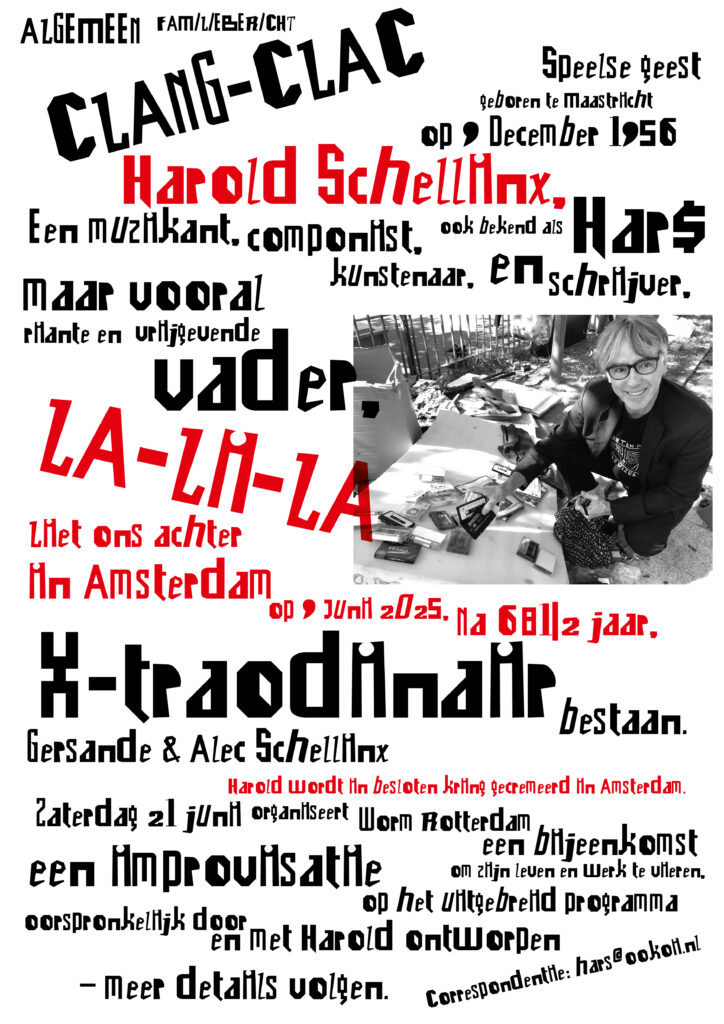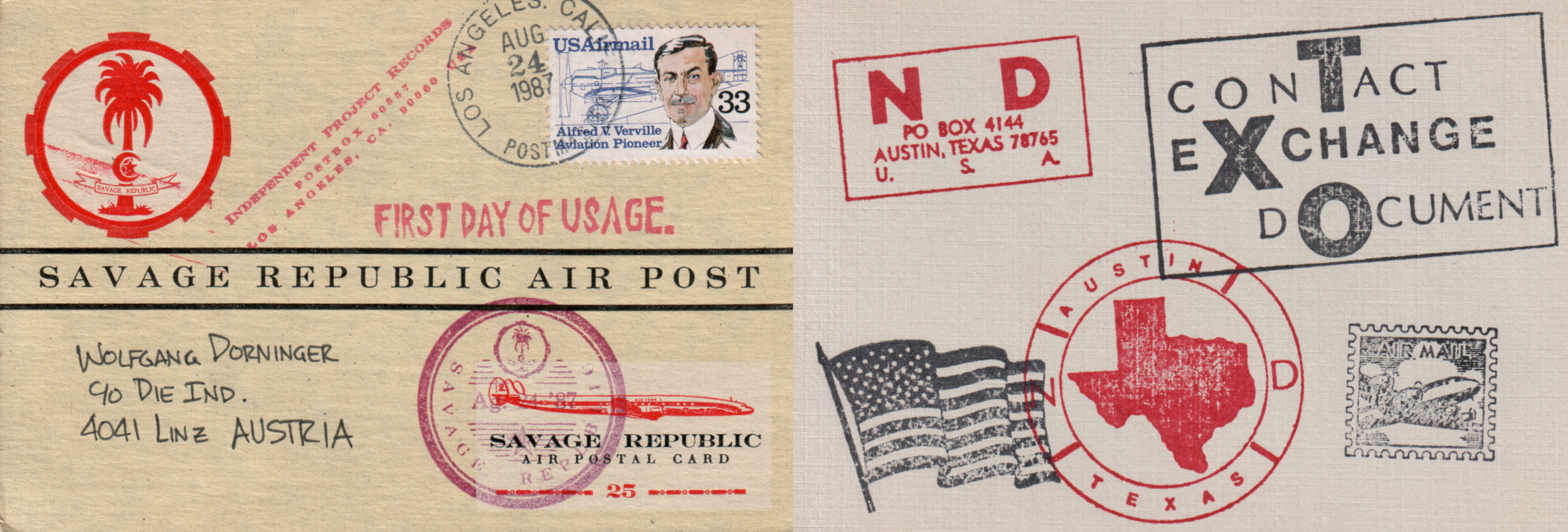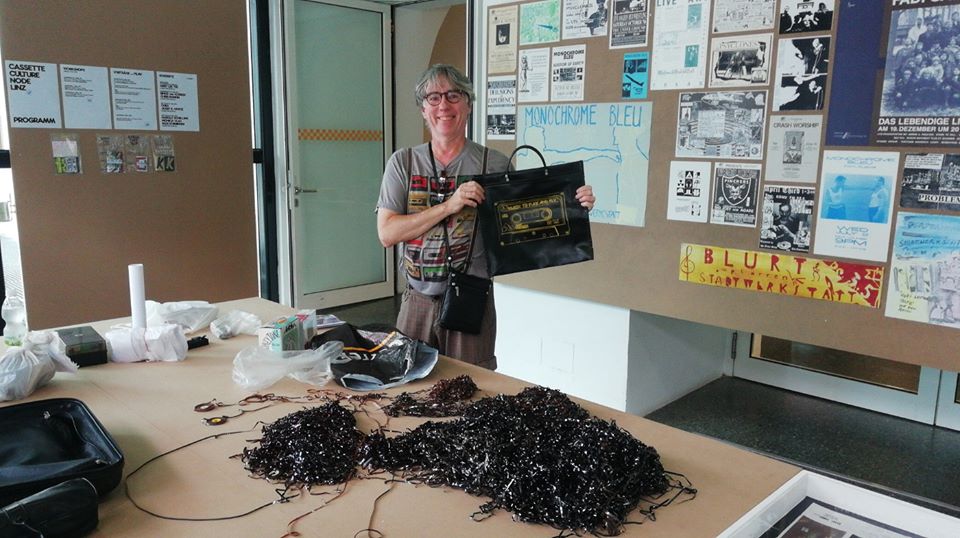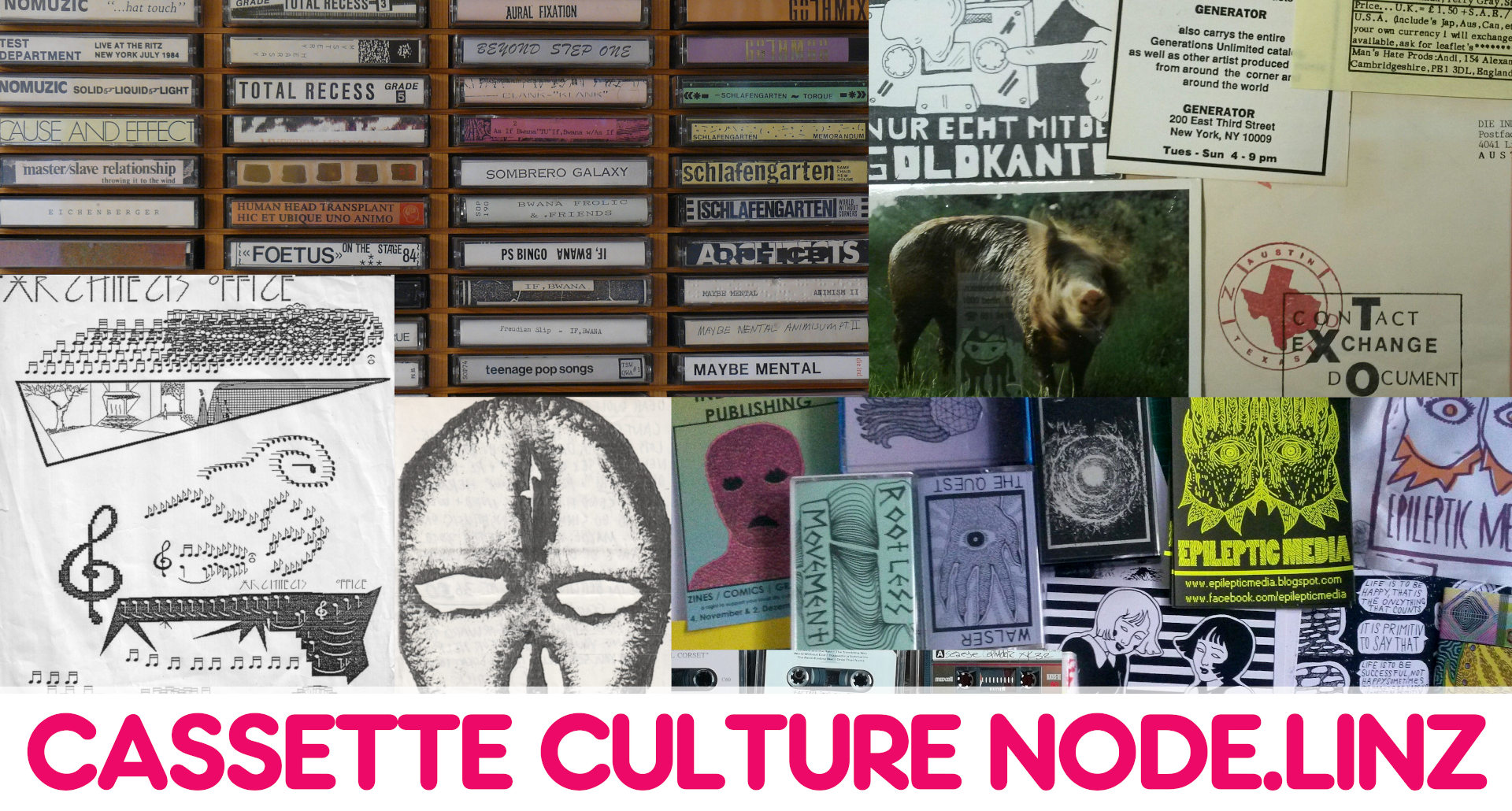When I heard about the death of Harold Schellinx, I was shocked, as we had communicated with each other until recently. The dispatch from his family made the tragedy even clearer. A lonely, cruel death. Harold was a funny, kind and super-intelligent artist, mathematician, musician, theorist, thinker and cassette fan. Our paths crossed in The Hague, Berlin and Linz. As a fan of his art I feel a great loss, as a person even more so. My deepest condolences to the family, friends and colleagues.
I got to know Harold Schellinx through Rinus van Alebeek. “You have to come to The Hague when you're in Amsterdam, we'll play with DIKTAT, because you should definitely interview Harold for your documentary.” In the backyard of the Art Space, I asked Harold how he uses the microphone in his art production: “I only use very cheap dictaphones or Walkmans with a built-in microphone and don't care about good sound quality”. From that moment on, as someone who hated cassette noise and was always looking for the optimum dynamics, I was fully awake mentally. I listened to the interview for my documentary, which will hopefully be finished soon, many times and always found new thought patterns from Harold Schellinx aka Har$. A year later in Berlin, as part of “das kleine field recordings festival” (curator: Rinus van Alebeek) in the Tuned City program (05.07.2008), I got to know Harold better because we both crashed the couch at Rinus' place. At Cake & Coffe in Neu-Kölln, Harold presented his archive “the found tapes exhibition” at Tuned City, a collection of found cassette tapes that he found while roaming the cities. Harold notes where he found them and takes a photo whenever possible. The tapes were numbered and stored (see link). Harold created performances, exhibitions and installations from the audio material he found. I have to say that his exhibition, the workshop and the final performance left me speechless.
In 2018 I invited Harold to Cassette Culture Node.Linz in Linz. Harold stayed for a week to hold the workshop “Found Tapes Exhibition” and the lecture “The aesthetics of erasure”. There was also a concert with his tapes and dictaphones as part of the exhibition program. Incidentally, Harold linked Cassette Culture Node.Linz with the Vieux Media Fest at La Générale in Paris via livestreaming. And later he wrote several articles about the exhibition on his SoundBlog and on Electronic Cottage.
What fascinated me about Harold Schellinx's art?
Above all his “Found Tapes Exhibition”, which he has been running from 2002 to the present day. By 2019, Harold had found 710 magnetic audio tapes in public spaces, "some of them are still more or less intact, but most of them have disintegrated into lumps, knots and tangles that I've picked up from the sides of highways, from sidewalks and lawns, fished out of gutters, which were covered in dust, mud and dog shit, which I loosened from fences, from posts, from branches in bushes and trees, where they once got caught, jammed, shredded and torn, where they were worn, bent and wasted by rain, wind, sand and dirt". I was fascinated, almost “magnetized”, by the handling of these found objects, from finding them to exhibiting them. Something locked away was opened, restored, reassessed, rearranged and sometimes exhibited as a new object. Harold made this process public in his presentations, very poetically, and raised some political questions in the process. He has documented the entire project process very precisely over the years in his SoundBlog.
Further links:
Found Tapes Exhibition - http://www.harsmedia.com/Chronson/FT/
Found Tapes Index - http://www.harsmedia.com/Chronson/FT/more.html
Found Tapes Map - http://www.harsmedia.com/Chronson/FT/Maps/
Harold documented his artistic, but also mathematical and musical world, very often closely interlinked, in his SoundBlog. As a reader of the SoundBlog, I not only stayed informed about his activities, but was also able to enter Har$'s thinking space. This space consisted of his very own way of thinking and performing composition, throwing ideas into the room in text form, spanning a network of perceptions from the inside to the outside, perfectly linked by sophisticated taxonomies. Over the years, he created countless networks, but also sprawling sound and art spaces such as the series unPublic (2013 - 2025) with 111 releases on Bandcamp or his SoundBlog with releases of his music in various formations from 1973 to the present day also on Bandcamp. unPublic is one of the most musically free spaces I have ever been able to listen to and the description on Bandcamp is proof of the fine Har$ joke "... the only difference with a concert is, these are *not* concerts...".
One network, the mailing list ‘soundblog_un_public - Projects _ sound, art, music, math _ news \ ir//regular reflections’, unfortunately didn't really get off the ground due to his death, but the objective was right: "Trying to, at least start to, diminish our global submission to the ad-driven, data collecting, conspiring and surveilling social media molochs, soundblog_un_public is intended as my personal / private old-school email newsletter alternative to FB, X, Insta etc posts, delivering-to all that are (some of the time) interested-occasional (count 1, 2, 3 a month at the most) messages, announcing and providing web links to new releases, concert dates, texts related to projects / works by Har$, the ookoi and other collabs".
Before your unexpected demise, I was already on my way to Paris, not only to finally get our unPublic session going, to make La Générale unsafe and to exchange ideas intensively again. Your contribution in Linz to Cassette Culture Node.Linz will always remain unforgotten.
Rest gently, dear Henricus, Harold, best Har$!
...
Harold Schellinx (aka Har$) was an independent musician/composer/artist, writer and theorist.
...
He was born in Maastricht, the Netherlands. Avant-rock musician based in Amsterdam (1975-1985). Editor and London correspondent of Dutch 'modern music magazine' Vinyl (1981-1983). Studied formal music and computer-aided composition with Gottfried Michael Koenig at the Utrecht Institute of Sonology (1983-85), and mathematics and its foundations with Anne Troelstra at the University of Amsterdam (Ph.D. 1994). (This—au moins from an academic point of view—makes him a great-grandson of Luitzen E.J. Brouwer.) Researched in mathematical logic and the foundations of computer science (1990-2000). Continues to advance towards greater achievements.(short CV from his homepage)
